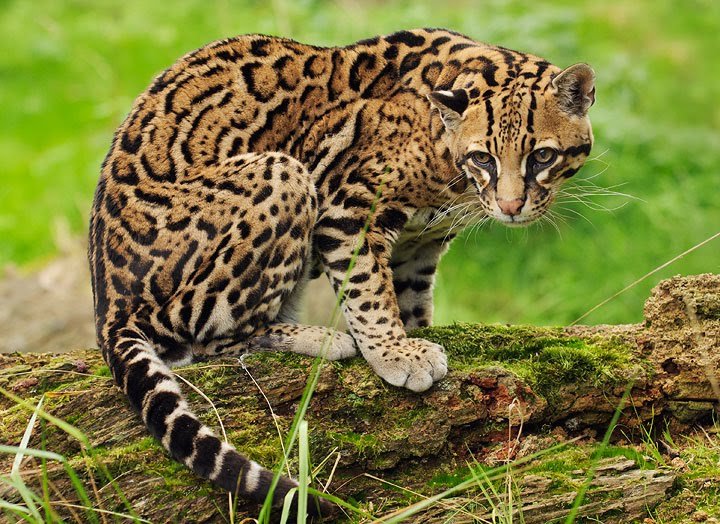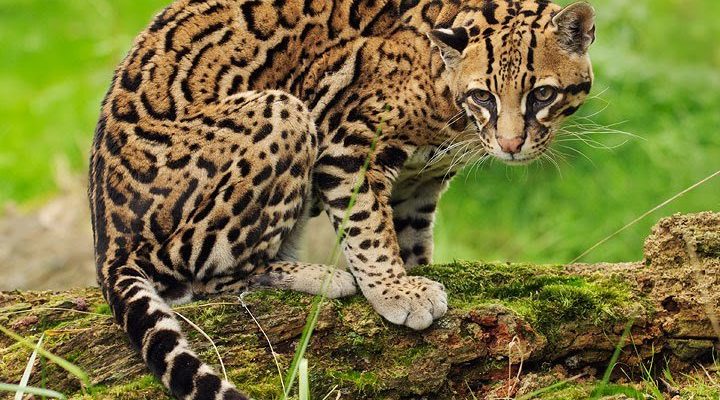
Ocelots are not just solitary hunters; they are pivotal players in their environments. Found in the forests of Central and South America, these animals are like the secret keepers of their habitats. They help maintain the balance of their ecosystems by controlling prey populations and engaging in a fascinating web of interactions with other species.
Understanding the Ocelot’s Habitat
Ocelots thrive in a variety of environments, from tropical rainforests to scrublands. These habitats offer plenty of cover for their playful and stealthy nature. You might picture them lounging in the branches of trees or stealthily prowling through thick underbrush. This adaptability is key; it allows ocelots to survive in areas where other predators might struggle.
One of the most interesting aspects of their habitat is the presence of water. Ocelots are excellent swimmers and often reside near rivers and wetlands. This gives them access to a diverse diet, as they can hunt both terrestrial and aquatic prey. Imagine them wading through shallow waters, stalking fish or small reptiles. The water sources not only nourish their diet but also enrich their ecosystem.
With all this natural beauty surrounding them, ocelots also face significant threats. Deforestation and habitat loss are major concerns. When their homes are destroyed for agriculture or urban development, the balance of the entire ecosystem can shift. This is why understanding the ocelot’s habitat is so important for conservation efforts.
Prey Dynamics: The Ocelot as a Predator
Ocelots are carnivorous creatures, and their diet consists of a variety of small animals. Think rabbits, rodents, birds, and even lizards. They’re like the hunters of the night, using their keen eyesight and excellent hearing to stalk their prey under the cover of darkness. Their hunting skills are not just about survival; they play a significant role in controlling prey populations.
Here’s the thing: when ocelots hunt and consume these smaller animals, they help maintain a balance in the ecosystem. If prey species become too numerous, it can lead to overgrazing or depletion of certain vegetation. Ocelots keep these populations in check, ensuring that no single species dominates the environment. This delicate balance is crucial not only for their own survival but for the health of the entire ecosystem.
Furthermore, ocelots often share their territories with other predators. You might find them alongside larger cats or different wildlife species. In these situations, they contribute to a fascinating web of food relationships. Each predator relies on the others to keep food sources balanced, creating a harmonious ecosystem.
Competition and Coexistence
In the wild, ocelots aren’t the only predators around. They often coexist with other carnivores, including larger cats and canids. This leads to interesting dynamics. You could think of it like living in a neighborhood where everyone has their own turf. The ocelots are smaller but incredibly skilled at finding niches that keep them away from direct competition.
For example, while jaguars might take down larger prey, ocelots often hunt smaller animals, allowing them to thrive in the same regions. This separation of feeding habits means they both can benefit from the same habitat without clashing.
Coexistence also extends to human influences. As farms and urban areas encroach on ocelot habitats, understanding their behavior becomes crucial. When humans learn to respect the ocelot’s territory, it helps maintain the delicate balance of the ecosystem. It’s a reminder that we share this planet with incredible wildlife, and our actions can significantly impact their survival.
The Role of Ocelots in Seed Dispersal
Now, here’s something you might not expect: ocelots also play a role in plant growth! When they eat fruits or small animals that consume seeds, they inadvertently help with seed dispersal. As they travel through their habitats, they carry these seeds in their droppings, helping to plant them in new areas.
This process is vital for maintaining biodiversity. Plants depend on animals to spread their seeds, and without ocelots, certain plant species might struggle to grow in new locations. This natural service supports not only the plant life but also other animals that depend on those plants for food and shelter.
Imagine walking through a forest where ocelots help create a thriving environment filled with diverse flora. This diversity strengthens the ecosystem, making it more resilient to changes and stresses. A healthy habitat is a beautiful thing, and the ocelot quietly contributes to it in many ways.
Conservation Efforts For Ocelots
The future of ocelots is not entirely secure. These cats face numerous threats, including habitat destruction, illegal hunting, and the impact of climate change. Conservation efforts are essential to ensure they can continue to play their crucial role in the ecosystem.
Many organizations work to protect ocelots by focusing on habitat preservation. This includes creating protected areas and wildlife corridors that allow ocelots to roam safely. By connecting fragmented habitats, these efforts enable ocelots and other wildlife to thrive.
Additionally, raising awareness among local communities about the importance of ocelots can lead to more sustainable practices. When people understand the role these animals play, they’re more likely to support conservation initiatives. After all, it’s about creating a future where both humans and wildlife can coexist harmoniously.
The Impact of Ocelots on Ecosystem Health
You might be wondering: why should we care about ocelots? The answer lies in their role as keystone species. This means they have an outsized impact on their environment. When ocelots thrive, it often indicates a healthy ecosystem. Conversely, a decline in their population can signal larger environmental issues.
Ocelots help regulate populations of their prey, maintain plant diversity, and contribute to the overall health of their habitats. Their presence can lead to a more balanced ecosystem, which is essential for biodiversity.
In essence, protecting ocelots means protecting a larger network of life. It’s a reminder that every species, no matter how small, has a role to play in the intricate web of nature. When we cherish and protect these beautiful cats, we’re also investing in the health of our planet.
In conclusion, ocelots are more than just beautiful creatures; they are vital components of their ecosystems. From regulating prey populations to promoting plant growth, their impact is profound. As we recognize their importance, let’s commit to preserving their habitats and ensuring that these amazing cats continue to thrive in the wild. Every small step we take can make a big difference for ocelots and the ecosystems they inhabit.

